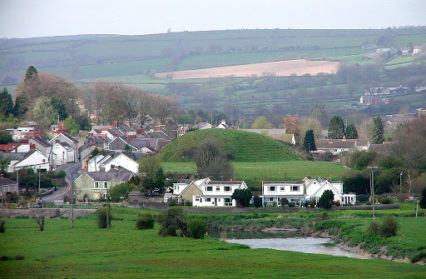Adam Somerset reviews a Mervyn Rees photography exhibition at the West Wales Centre for Crafts in St Clears featuring photographs of ‘Peter’.
‘Peter’ is the subject of several photographs from the collection on display in St Clears’ handsome stone gallery. Peter comes from the archive of Llanelli’s photographer Mervyn Rees. Peter, born around the year 1940, has been captured by Rees at age eight as a tousle-haired Artful Dodger. He is manifestly a boy of the Llanelli streets, speculatively a chimney sweep’s boy, and is characteristic of the images created in this distinctive and absorbing exhibition.
There are three aspects to fascinate in this exhibition. The first is the sense of artistry that Rees brought to the images he was making. Rees (1899-1980) made a living as a portrait photographer, successful enough to allow him to retire to the rural St Clears area. Although every town had its local photographer, Rees had a reputation that at times saw customers lining up outside his home in wait to enter his small self-constructed abode. His is the era of our grandparents or great-grandparents but it is now unimaginable in a time when a single site, Shutterstock, hosts thirty thousand new images every day, all for sale.
In the case of eight-year old Peter the relationship of subject and photographer was reversed. Rees photographed him for the intrinsic interest of capturing his image. The small fee that Peter received was reportedly spent on the indulgence of ice cream.
Rees was also a painter, a wide reader across history and philosophy, and he and wife Olive had a lifelong engagement with Llanelli’s theatrical life. Many of the pictures, and those of women strikingly predominate, depict their subjects elaborately prepared in costume and make-up. Rees would spend some time on the making ready of the women in his studio. His wife is represented a dozen times in a diversity of dress and camera angles. One of his other subjects becomes a Gainsborough portrait transposed onto film. The head of the woman, shot in profile, is adorned with rolling ringlets of blonde hair under a vast and gorgeous hat.
The eye of the artist that Rees brought to his work also extended to elaborations after the taking of the image. In the studio he has already memorably caught the actress Ennis Tinnusche. But then the eloquent hands have had special light effects along the ridges of the fingers of her eloquently posed hands. To the untrained eye it hints at some kind of chemical treatment in the developing. In fact it is more simple. Rees has physically scored his glass plate to achieve his desired effect. On another picture his subject wears a filmy veil and Rees has extended the line to create his artistic effect.
The second aspect is that of simple documentary record of the past, a world that we can now never know. Prior to discovering his vocation as a photographer, Rees worked as a metallurgist at Llanelli’s steel plant. A small picture, wonderfully composed, at the opening of the exhibition portrays two steel workers with a long rod that connects them to the open-hearth furnace. The exhibition is also testament to the cosmopolitanism of booming industrial Carmarthenshire. Doreen Chinn, who became a singer, was reportedly a member of a Chinese laundry-owning family. Her features, shot in close-up, are intriguingly exotic with small indication of a Chinese element in their make-up. A serviceman sits for Rees but the words on his lapel reveal that he is from Jamaica.
This sitter illustrates a third aspect, the element of mystery that envelops images from photography’s history. David Eggers’ marvellous novel of last year The Circle creates a world where image-recognition software combines with massive text searching so that all ancestry and past lives are known and recorded. Since the opening of the exhibition, and the attendant publicity attracted to it, several sitters have been identified. But many, and they are grandparents or great-grandparents of today’s Carmarthenshire citizens, remain unknown.
This is an exhibition of the greatest interest on different levels. It is planned that a selection of the archive will find its obvious audience when put on display in Llanelli’s Parc Howard. It has of course been enabled by the digital age; the original glass plate negatives have been laboriously scanned and twentieth-century printing has allowed the recreation of Rees’ subtle lighting effects in unmediated form. Nonetheless, it has been a task of devotion on the part of the heirs of the archive and much gratitude is owing to the grandchildren of Mervyn Rees who have made possible this exhibition.
Mervyn Rees Exhibition
West Wales Centre for Crafts
St Clears
Adam Somerset is an essayist and a regular contributor to Wales Arts Review.












